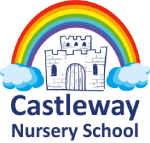Art & Design
We are Artists. We are Castleway.
Our art and design projects are well sequenced to provide a coherent subject scheme that develops children’s skills and knowledge of visual elements, art forms, artists and art movements. Projects are placed alongside other subject projects where there are opportunities for making meaningful connections. For example, Beautiful Botanicals has been placed in the same teaching sequence as the science project Plants.
Where possible, projects with similar materials are spaced out to have as little strain on resources as possible. For example, in Key Stage 1, clay work is taught in different terms. Seasons are also a consideration for the placement of art and design projects. For example, if children are required to work outdoors, these projects have been placed in either the latter part of the spring or summer term.
Foundation Stage 2
In Foundation Stage 2, as part of the 'Expressive Art and Design curriculum, children develop their artistic and cultural awareness which supports their imagination and creativity. Within the continuous provision, the children have regular opportunities to engage with the arts, enabling them to explore and play with a wide range of media and materials. Each half term the children focus on a chosen artist, exploring techniques and resources. The workshop provision with the continuous provision supports the independent application of skills.
Key Stage 1
In Key Stage 1, each autumn term begins with the colour project Mix It. The teaching of this project in Years 1 and 2 enables children to be introduced to and then revisit colour theory and provides plentiful opportunities for children to explore primary and secondary colours.
Year 1 begins by exploring themes directly related to the children themselves, such as their facial features, the surrounding natural world and their local community. In Year 2, the projects expand children’s artistic horizons to study a more comprehensive range of artists, artistic movements and creative techniques.
Lower Key Stage 2
In Year 3, children expand their experiences to study a broader range of art forms, artists and genres. They also begin to study art from specific and diverse periods of history, including prehistoric pottery and Roman mosaics. Other genres studied in Year 3 build on previous techniques learned in Key Stage 1 and include more complex techniques in printmaking, drawing, painting and textiles.
In Year 4, children will complete an artist study as they develop more specialised techniques. They explore ways in which techniques that artists use when composing landscape images, such as colour and atmosphere. Children will also learn about the 3-D representation of the human form, including statues, statuettes and figurines.They study examples and use their clay skills to create a Sumer-style figurine.
Upper Key Stage 2
In Year 5, children develop and combine more complex artistic techniques in a range of genres, including drawing, painting, printmaking and sculpture. Children continue to build on their understanding of other historical periods and cultures by studying the ancient Chinese art form of taotie.
In Year 6, children are encouraged to work more independently in projects like Environmental Artists and Distortion and Abstraction. Such projects require them to consider more conceptual representations of personal, environmental, social or political messaging. Children explore diversity in art by studying the projects Inuit and Trailblazers, Barrier Breakers.
Throughout the art and design scheme, there is complete coverage of all national curriculum programmes of study.
Intent, implementation and impact statement for Art and Design
Intent statement:
Learning within art, craft and design stimulates creativity and imagination. It provides visual, tactile and sensory experiences and a special way of understanding and responding to the world. A high-quality art and design education should inspire, engage and challenge children - enabling pupils to communicate what they see, feel and think through the use of colour, texture, form and pattern.
Children will become involved in shaping their environment through art and design activities, involving different creative techniques. They will explore ideas and meaning through the work of artists and designers. Additionally, as they learn about the history, roles and functions of art, they can explore the impact that it has on contemporary life and that of different times and cultures.
Our art and design lessons are taught through a thematic topic approach using the Cornerstones Curriculum.
Aims:
The national curriculum for art and design aims to ensure that all pupils:
Produce creative work, exploring their ideas and recording their experiences
Become proficient in drawing, painting, sculpture and other art, craft and design techniques
Evaluate and analyse creative works using the language of art, craft and design
Know about great artists, craft makers and designers, and understand the historical and cultural development of their art forms.
Implementation
We will achieve this by:
Teaching art regularly. The children will cover an art topic at least once every term and will also have additional opportunities to engage with art and design activities throughout the school year.
Linking art as closely as possible to the topic for the term, to ensure relevance and context.
Teaching a predominantly skills-based curriculum, which covers drawing, painting, sculpture, textiles and printing. Full details of our art curriculum can be found in our Long Term Plan.
Re-teaching skills throughout the children’s time in school. Skills are revisited and honed in a spiral curriculum, which progresses in terms of depth and challenge, to build on the children’s previous learning.
Ensuring that each child develops their skills and techniques in a way appropriate to them, through clear differentiation and support, active and purposeful experiences, and using a variety of art materials and teaching strategies.
Introducing children to artists and art movements directly linked to the skills or topics they are covering.
Utilising a sketchbook approach, so that children feel safe to experiment and take risks, without the fear of doing something “wrong”.
Openly promoting art and design as a possible further study or career choice.
Encouraging each child to evaluate their art and design work and that of others, both with peers and adults.
Celebrating effort, progress and achievement in art through displays, exhibitions and enrichment activities, such as trips out and competitions.
Impact
By the end of their time with us, we want pupils to have learned, improved and embedded a range of artistic skills. They should have an awareness of a broad range of artists and craftspeople, and be able to consider and discuss the artworks they come across. We want our pupils to be confident to explore, experiment and take risks, placing value on the process and journey that they take, not just on the finished product. Most importantly, we want children to have found and enjoyed a creative outlet – a means of self-expression and enjoyment.



